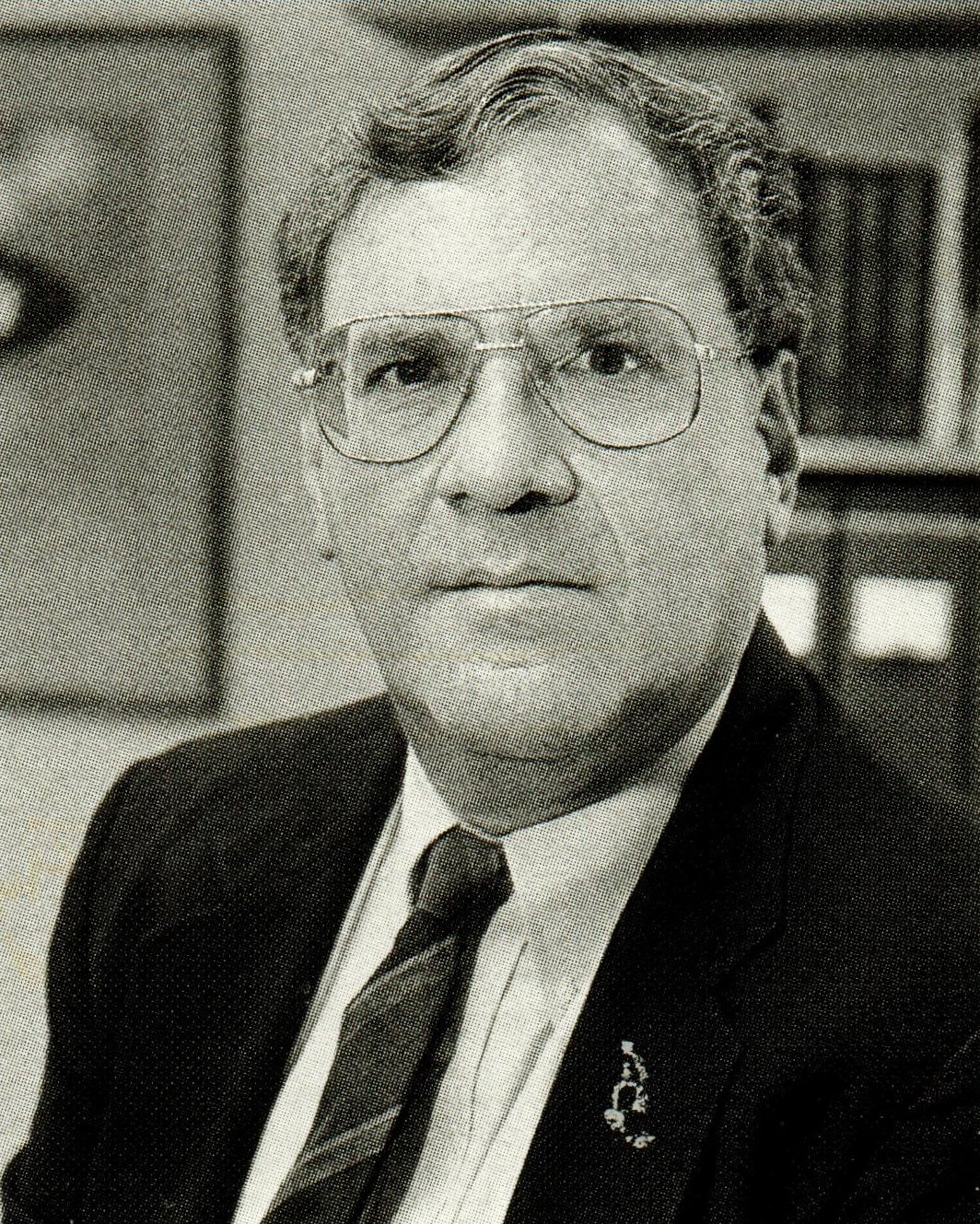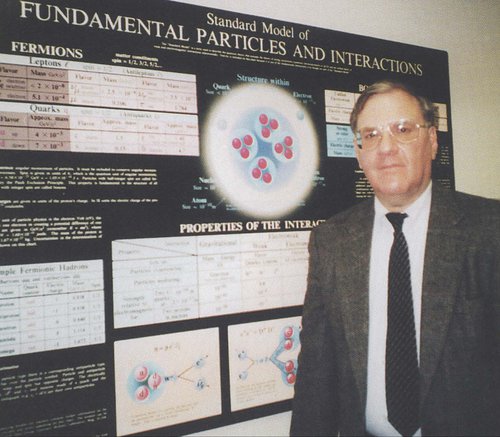Remembering Marvin Goldberg: Professor Emeritus of Physics who Taught at Syracuse University for More Than 30 Years
Goldberg, who passed away in November 2023, helped grow the Department of Physics and advance the field of experimental particle physics.

Editor’s Note: The following article was contributed to by Goldberg’s colleagues at Syracuse University, including Eric Schiff, Tomasz Skwarnicki and Edward Lipson.
The College of Arts and Sciences (A&S) mourns the passing of Marvin Goldberg G’65, professor emeritus of physics. Remembered for his advocacy of international research collaborations and innovations in science education, Goldberg held numerous leadership positions at Syracuse University and played a key role in enhancing the student experience and shaping the Department of Physics. Considered a pioneer in experimental particle physics, Goldberg focused his research on exploring the smallest ingredients of matter.
Originally from New York City, Goldberg received a degree in physics from the City College of New York in 1960 and a Ph.D. in physics from Syracuse University in 1965. Following a two-year appointment as research associate at Brookhaven National Laboratory (BNL), Goldberg joined the physics faculty in 1966 as assistant professor and was promoted to full professor in 1974.
For nearly 40 years, Goldberg helped to further the strategic goals of his department, A&S and the University. He was physics department chair from 1982 to 1986 and again from 1989 to 1995, and served on several A&S panels, including the promotions committee, faculty council and admissions committee. He was also a member of various University committees and governing bodies, including the Science Council, Chancellor’s Panel for the Future of the University and the University Senate.
Goldberg’s legacy is still felt today. As physics chair, Goldberg led major efforts to recruit leading researchers to the faculty and steered the physics department through a period of significant growth. Among the faculty he hired were Marina Artuso, Peter Saulson, Tomasz Skwarnicki, Sheldon Stone, Gianfranco Vidali and Richard Vook. Many of these researchers have gone on to contribute significantly to the University’s prominence in gravitational wave astronomy and experimental particle physics research. The heavy quark research group, once co-directed by Goldberg, has recently contributed to key discoveries of pentaquarks and tetraquarks, and is having a pivotal impact on the major detector component to the Large Hadron Collider beauty (LHCb) experiment at the European Center for Nuclear Research (CERN) in Geneva, Switzerland.

In his research, Goldberg played a leading role in experiments that led to major sub-nuclear particle discoveries. In the late 1960s, he contributed to measuring properties of meson and baryon resonances, which were essential to the formulation of the quark model. During his time at BNL in the mid-1960s, he participated in experiments concerned with verification of the quark hypothesis formulated in the early 1960s by Murray Gell-Mann (for which he won the 1969 Nobel Prize in Physics). At that time, this was a highly controversial theory proposing that subnuclear particles participating in nuclear interactions, like proton or neutron forming nuclei, were not elementary, but were themselves clumps of even smaller particles called quarks. Goldberg was a spokesperson of the two experimental collaborations at BNL which observed short-lived particles predicted by the quark model, and therefore contributed to the validation of this idea.
In the 1970s, he was involved in the Charm Search Experiment, making fundamental contributions at CERN; and in the years following was a contributor to the CLEO experiment and CLEO III detector development at Cornell University. He and fellow researchers at Cornell investigated particles containing heavier “bottom” quarks, offering an opportunity to look for yet unknown forces in nature which could explain matter-antimatter asymmetry in the Universe. The Syracuse group built major subcomponents of the CLEO I, and later of the CLEO II experiments, which operated at Cornell through the late 1990s.
In 1995, Goldberg took a position with the National Science Foundation as a program director for the Elementary Particle Physics division where he served for more than a decade. He helped to strike an agreement between the United States and CERN for a major participation of American particle physicists in experiments at today’s highest energy particle smasher – the Large Hadron Collider (LHC). He was a strong advocate for the need of outreach to a broader society by researchers advancing science frontiers, which led to lasting changes in NSF policies.
Goldberg was a member of several professional organizations, including the American Association of University Professors, the American Association for the Advancement of Science and the American Physical Society (APS). With the APS, Goldberg was elected Fellow, a prestigious honor held by 25 other Syracuse faculty members since its inception in 1921. He also served as a visiting physicist at both CERN and BNL.
Goldberg rounded out his career at the University as Vice Provost for Special Initiatives and was granted emeritus status in 2005-06. He was predeceased by his first wife, Arleen, and is survived by his second wife, Tatum Goldberg, and his two sons, Dr. David Goldberg and Dr. Philip Goldberg.
